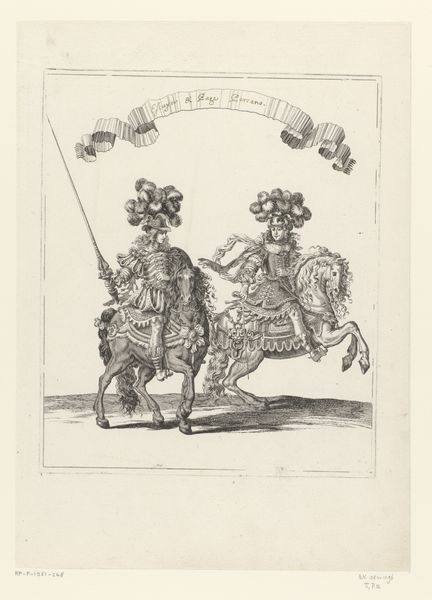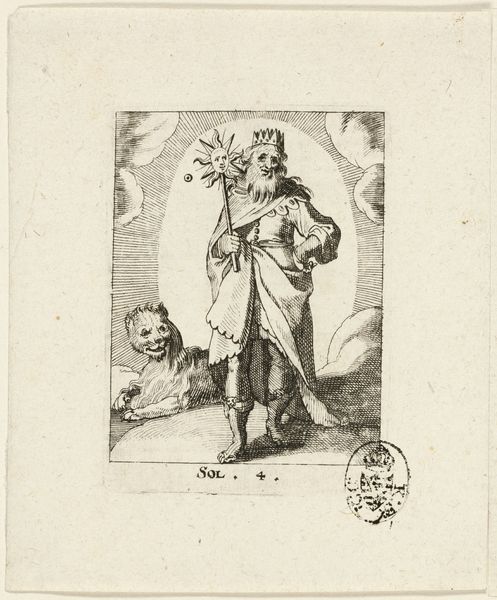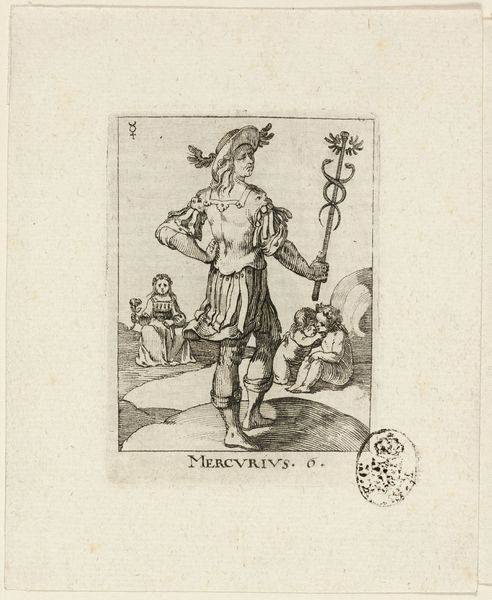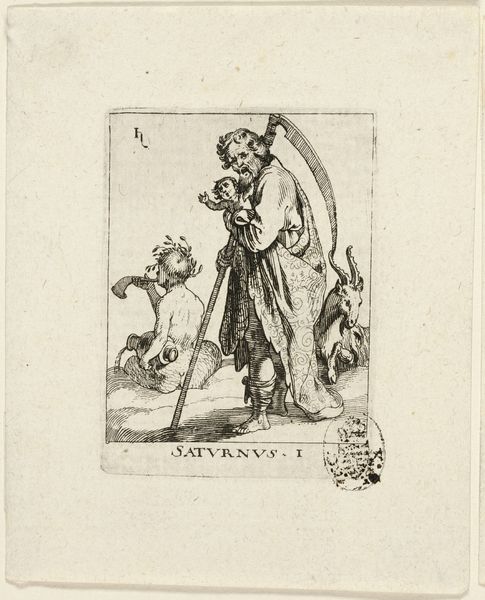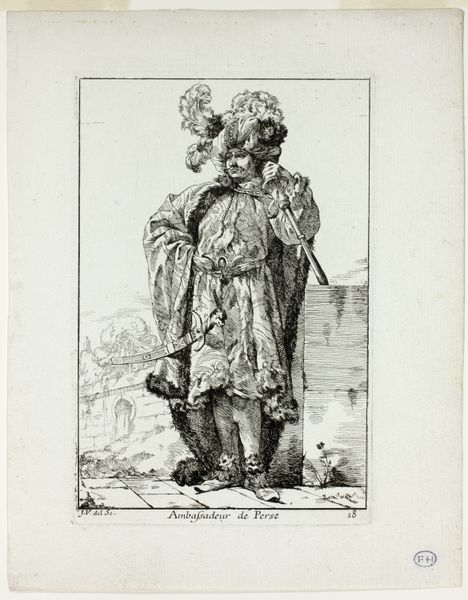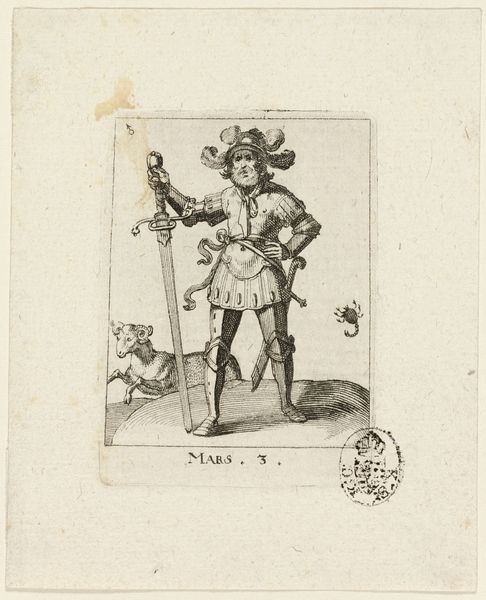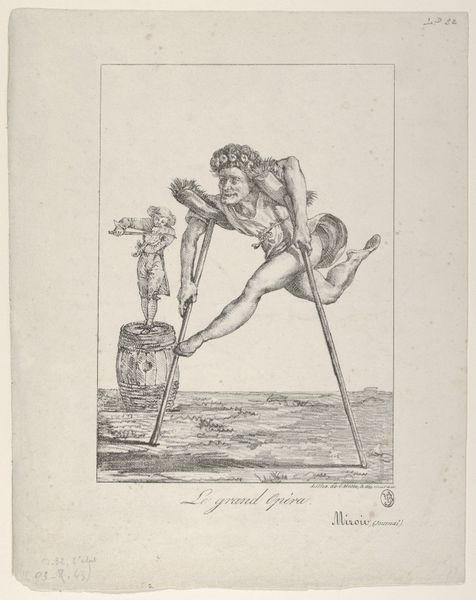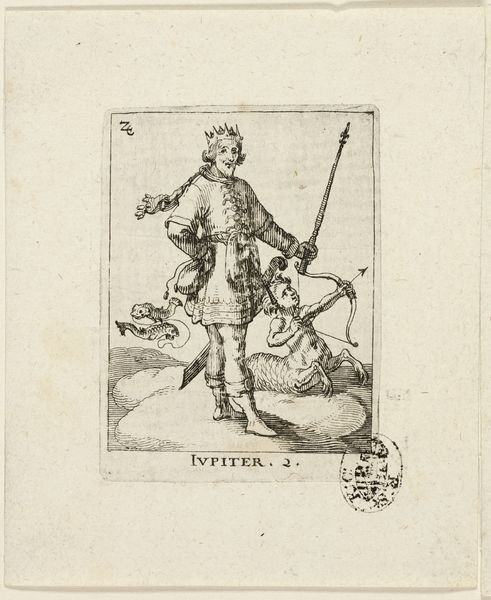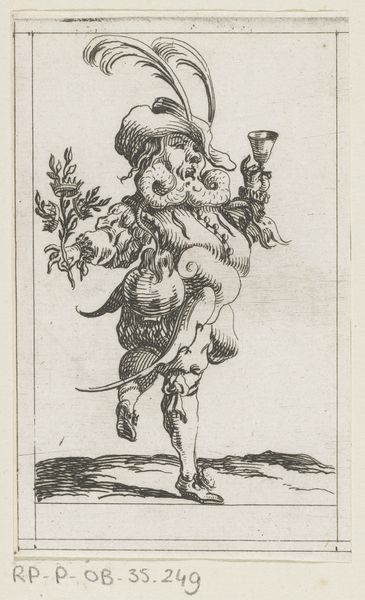
drawing, print, etching, paper, engraving
#
drawing
# print
#
etching
#
figuration
#
paper
#
ancient-mediterranean
#
history-painting
#
engraving
Dimensions: 69 × 49 mm (sheet)
Copyright: Public Domain
Editor: This is “Venus, plate five from Der VII Planeten,” an engraving and etching by Conrad Meyer. I find it quite mysterious – what's the story behind Venus, the bull, and those scales? How do you interpret this work? Curator: This piece, while seemingly straightforward in its classical allusion, can be seen as deeply intertwined with the socio-political anxieties of its time. Notice the symbol of Venus alongside the astrological symbolism. Meyer seems to be layering classical iconography with contemporary concerns about balance and judgement. Editor: Balance? Judgement? Curator: Yes, think about the role of women in 16th- and 17th-century European society. Venus, often a symbol of beauty and love, is here presented alongside scales. Could Meyer be commenting on the societal expectations placed upon women, weighing their virtues against patriarchal standards? Consider also how power dynamics between genders were expressed and reinforced through visual culture. How does the juxtaposition of the goddess and the bull complicate these established archetypes? Editor: So, it’s not just a mythological scene, but a commentary on gender and societal expectations? Curator: Precisely. Art doesn't exist in a vacuum. By engaging with history, we can examine how artistic representations can both reflect and challenge prevailing ideologies. It invites us to unpack power structures, gender roles, and the subtle ways they were negotiated in the past. Editor: That’s fascinating; I’ll never look at classical art the same way again! I now better understand how history and cultural norms were tightly knit together through the arts.
Comments
No comments
Be the first to comment and join the conversation on the ultimate creative platform.
